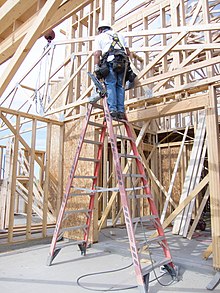Wood Fence Enemies and How to Combat Them
 The beauty of a well-made wood fence is quite a sight. However, if left to the rigors of nature, a beautifully built wood fence can become a haven for pests and parasites that can destroy your hard work.
The beauty of a well-made wood fence is quite a sight. However, if left to the rigors of nature, a beautifully built wood fence can become a haven for pests and parasites that can destroy your hard work.
The most notorious wood-destroying offenders come in the form of carpenter bees, termites and carpenter ants. These three species of insects are bent on using your wood fencing as their personal stomping grounds, and if not dealt with, they will have their way. In order to keep your wood fence safe, you will need to know how to identify these pests and protect your fence from an invasion.
Carpenter Bees
Carpenter bees create nests and lay eggs in different wooden structures, especially those that have been neglected and exposed to the weather. This makes wood fencing a preferred nesting spot for carpenter bees.
Carpenter bees are fairly large. They are similar in appearance to bumblebees, but can be distinguished by their solid black abdomen, which has a greenish-purple sheen. The appearance of carpenter bees is quite intimidating, but it is important to note that the males cannot bite or sting, while females will only sting when they are handled directly.
Carpenter bees damage wood fences by boring holes deep into the wood. They do this to create breeding chambers for laying their eggs. These holes can be spotted by their size, which is about the size of a dime. One hole is not enough to cause any significant damage to your wood fence, but when it becomes more densely populated, the wood will begin to weaken and become vulnerable to damage from other pests.
In order to control an outbreak of carpenter bees, take measures to seal up any burrowed holes that you see. This can be done by using a liquid sealant to fill in the hole, and then covering the entrance with wood putty or steel wool. Pesticides can be used in cases where carpenter bee nesting is extreme.
Termites
Termites are another threat to the security of your fencing materials. There are several kinds of termites, each with different characteristics and behavior:
Damp wood termites. Damp wood termites are more prone to feeding from stumps and dead limbs of trees. These termites love wooded areas with a constant supply of moisture.
Subterranean termites. These are smaller in size than damp wood termites. They usually appear to be grayish-white and are around three-sixteenths of an inch long.
Dry wood termites. Dry wood termites are the kinds of termites that can cause a lot of damage to movable wooden objects like furniture, as they require no contact with soil to live. And unlike the damp wood termite, they feast on un-decayed wood with low moisture.
There are several ways to treat a termite infestation. One way to use a liquid termite treatment that kills or repels the insects. Another is to use termite baits. These work by spreading small amounts of pesticides through the worker class. Borate termite treatment is applied directly to the wood like a coat of paint. One of the best methods against the dry wood termite is to use fumigation. This is an efficient method of stopping termites that are hard to spot.
Carpenter Ants
The next biggest threat to your wood fence is the carpenter ant. These pests nest in moist wood, such as rotting trees, tree roots, stumps, and logs. Carpenter ants are known for establishing “satellite” nests away from their parent nests. These nests do not require moisture, and they can be found in insulation, doors and wood. The workers move between the satellite colony and the parent colony. In late summer, the queens and males may appear winged and emerge from the satellite colonies. They can invade structures in late winter and early spring from their satellite nests.
To keep carpenter ants from infesting, it is important to keep moisture content low. Any moisture damaged wood will have to go, or you risk a carpenter ant infestation. Firewood should be stored in a garage or shed to keep it dry and provide air circulation. Tree and shrub stumps and roots should be removed, as should low overhanging branches.
~Ben Anton, 2010
